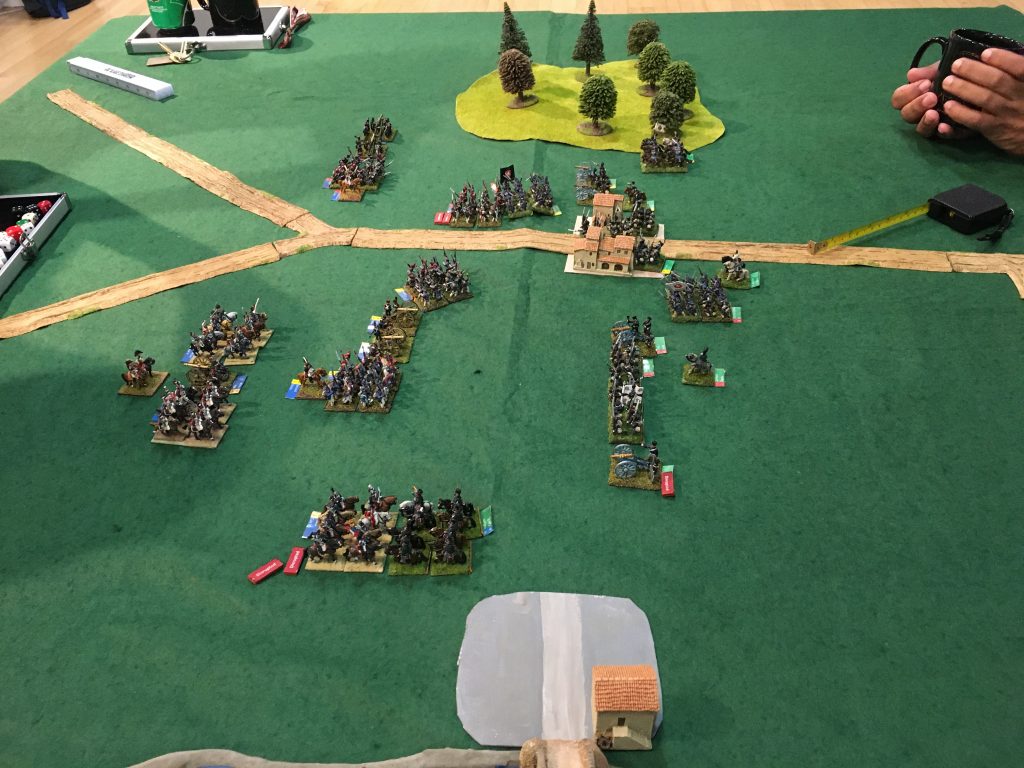
Since my last report we have played two more short games at the club with my new rules, Big Napoleonic Battles (loosely based on Bloody Big Battles). They have settled down enough for me to publish them on the Rules page of this website in pdf.
These rules are a working prototype, which I am calling V0. They should be all you need to play, but there are no pictures or diagrams, and very few examples. While these rules will never be published in the mainstream way, with lots of eye-candy and glossy paper, I might aspire to something with more explanation and perhaps even some scenarios. The model here is again Bloody Big Battles, though I can’t see that I will ever get the rules actually printed and sold for money.
Instead of updating these rules as I think of changes, which I have done a couple of times already, I propose to publish a separate sheet of updates and clarifications, which I can update regularly. That will make things easier for people who have printed the current version, as some of my club colleagues have. These will be consolidated into V1 in due course. At that point I will attempt examples and diagrams.
These rules are by no means perfect, but they give a good club game. My fellow gamers like them – something I take as a considerable complement: we often let go of rules that we find don’t quite work. That has happened with Fistful of TOWs, Battlefront, Rapid Fire and Iron Cross for WW2/Modern, and Altar of Freedom ACW. My next project indeed will be to develop something for my WW2 models! Foe us the rules have to play quickly in a multi-player format, and conform to some degree with how they expect wargames to work.
How realistic are they? I get fed up with claims made by rules promoters that are both simple to pick up and realistic, when they obviously have not been tested against historical reality. The original BBB has been extensively used for historical refights, though typically for battles later in the 19th Century, so it has a fair claim to realism. I can’t yet make the same claim for BNB, as the sort of quick scenarios we can do on club night are rarely historical. I might try out an Albuera game next week, though.
What I can say, as I said last time, there is high variability based on dice throws, making outcomes very unpredictable. I don’t think that is unrealistic, given the vast number of factors that have been abstracted away, but it will irritate some players just as it entertains others.
Do try them out and let me know how you get on!
